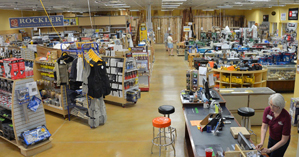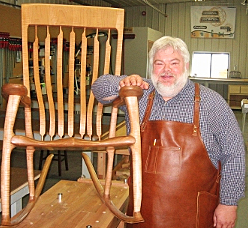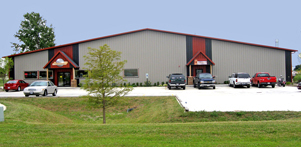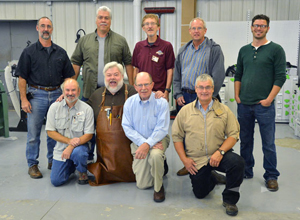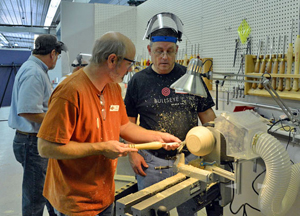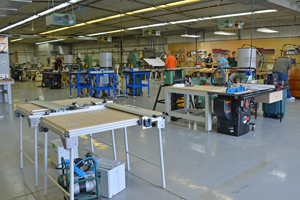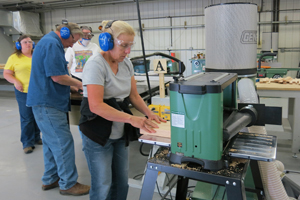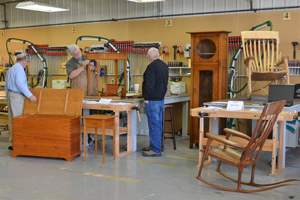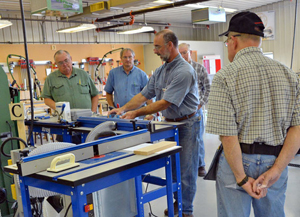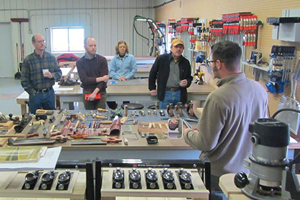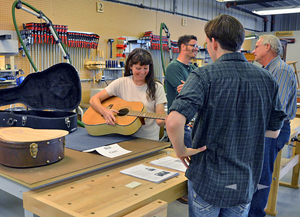
If you live in central Illinois, you may already know about CU Woodshop Supply in Champaign-Urbana. It’s an 8,000-square-foot woodworking retail outlet that features a Rockler affiliate store, plus a broad offering of machinery, tools, accessories and lumber. It also houses an additional space called the DreamShop, a member-owned-and-operated woodworking shop showcasing around $150,000-worth of the the latest machinery and Festool products in a state-of-the-art setup. But if you haven’t been to the store since last summer, you may not know that CU Woodshop Supply now has added another 16,000 square feet to its growing woodworking “campus.” In August, the new space opened as the CU Woodshop School of Woodworking.
Mike Van Pelt, education director of the new school, along with store founder Dennis Coleman, have ambitious plans: “We want to be the Midwest’s premier woodworking destination.”
The idea for opening a woodworking school came as much from necessity as inspiration. About two years ago, Van Pelt says a machine shop adjacent to CU Woodshop Supply went up for sale. It was already set up with an office space and a vast shop area perfect for classroom instruction and an expansive woodworking shop, plus room for warehousing inventory and lumber. Up to that point, the store had already been offering woodworking classes to the public, using its DreamShop space. But classes were beginning to encroach on the time DreamShop members had available to work on their own projects. And, nearby Parkland College was channeling students enrolled in its community education program to CU for woodworking classes.
Something had to change, so CU bought the machine shop and started renovations.
Van Pelt joined the store staff about a year ago this month. Formerly, he founded and ran the American Sycamore Retreat in Cloverdale, Indiana. The Retreat offered classes and lodging accommodations for students and instructors, but Van Pelt was forced to close it during the recent recession. Prior to opening the Retreat, Mike worked for 30 years in woodworking retail, as a woodworking teacher and as a salesman and demonstrator for ShopSmith and Delta. A lifelong woodworker, he specializes in Arts and Crafts furniture. After joining the CU staff, he ran Saturday seminars and worked on the showroom floor, “so helping to start our new school and get it up and running smoothly was a natural fit for me,” he says.
Mike’s previous affiliation with the woodworking school circuit has also enabled him to draw some talented and acclaimed woodworking instructors to the new school. “We have 12 regular teachers, including three who were already nationally recognized before they started partnering with us: George Vondriska, Tom Turgeon and Donna Menke.”
Vondriska is managing editor of Woodworker’s Guild of America and a regular contributor to Woodworker’s Journal. Turgeon is, by Van Pelt’s estimation, the best longbow craftsman in the country. Menke’s specialty is carving wearable art as well as crafting band saw boxes, for which she’s published a book and numerous magazine articles. A list of other instructor bios is available by clicking here.
CU School of Woodworking has only been open four about four months, but the scope of its curriculum is broad. Courses in woodworking basics, hand tool sharpening and use, hand plane restoration, bowl and pen turning, cabinetry and project-intensive courses all have been offered or are on the docket for this year. The school also provides two classes that are focused on getting the most from Festool tools. (CU Woodshop Supply is an authorized Festool dealer, and Festool classes are led by John Morrison, a Festool expert.) Click here to see a course listing for 2013.
Van Pelt is looking forward to several courses the school will host in the months to come. One by John Garrison this May will teach students how to make a Maloof-style sculptured rocker. Mike plans to lead a course on building a cabinetmaker’s workbench. Over the years, he says he’s built more than 200 benches, “and the design just keeps getting better. For this coming five-day class, I really think we’ll build what I consider to be the very best workbench money can buy.”
Just this month, CU has held 11 classes, and courses are filling for third and fourth quarters of 2013 now. Almost 20 different topics will be taught this year, plus several more offered through Parkland College. Sessions are offered evenings, weekends and now even weekdays to accommodate the needs of students. Course durations range from just a few hours to as many as 10 days for complex projects. So far, the most popular topics have been general “Woodworking 101” training, hand tool use, sharpening and woodturning. The two Festool instruction classes are also drawing good attendance.
Aside from its wide-ranging curriculum and knowledgeable instructors, Van Pelt is pleased with how well the school’s workshop has been conceived. Classes are limited to six to eight students, and each is provided a dedicated workstation. It includes a 4×8 assembly table customized to fit Festool’s MFT accessories, a traditional workbench, clamps, drill/driver, sander and a collection of hand tools. In addition, the shop features five “pods” of stationary machines to minimize or eliminate waiting time. Each pod has a planer, jointer, band saw, drill press and table saw; all connected to dust collection and situated close to the student workstations. “We provide everything a student will need, tool-wise, to complete the class, and there’s pretty much no need to double-up on machinery or share any of the smaller tools.”
The school also has a separate woodturning room with six lathes of various sizes so turning classes can be offered at the same time as other classes without disturbance.
Who’s looking for woodworking instruction these days? Van Pelt reports that many students are novices who want to get into woodworking but don’t know how. Others don’t have the space or budget for buying tools but want to improve their skills. A growing segment are women who’ve never had access to woodworking education before. But Van Pelt assures them, “if you can run a home, operate a sewing machine and drive a car, there’s not a woodworking machine you can’t learn how to use. They’re excited and often come with mindsets that are more open to learning new things than many of the men.”
Mike considers himself blessed to be surrounded by great staffers and to have the opportunity to continue to share the craft and leave a legacy. But, he admits part of the joy of teaching continues to be learning. “Students often approach problems different than I would in the shop, and their solutions offer me opportunities to try new things. I’m constantly becoming a better teacher as a result.”
Learn more about CU Woodshop School of Woodworking by clicking here.
